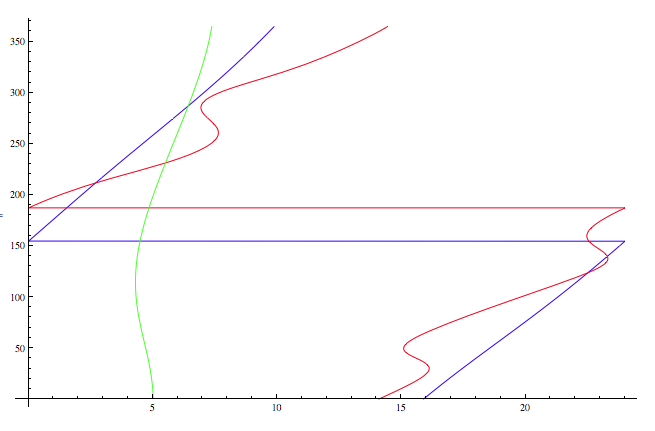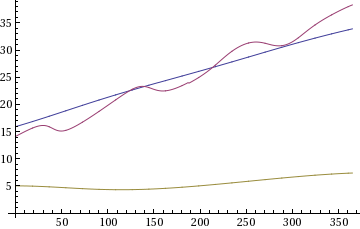How can I prevent plotting functions from "connecting" inside a plot points that should "wrap around" outside the plot?
For example, how do I eliminate the horizontal lines running across the following ParametricPlot?

In this figure, the paths that reach the right hand end of the graph at 24 should continue at 0 (these are hours, so 24=0) without passing backwards across the figure.
Show[
ParametricPlot[
{AstronomicalData[
"Mars", {"RightAscension",
DatePlus[Date[], d], {$GeoLocation[[1]] , $GeoLocation[[2]]}}], d},
{d, 0, 365}, AspectRatio -> 1/1.6, PlotStyle -> Blue],
ParametricPlot[
{AstronomicalData[
"Mercury", {"RightAscension",
DatePlus[Date[], d], {$GeoLocation[[1]] , $GeoLocation[[2]]}}], d},
{d, 0, 365}, AspectRatio -> 1/1.6, PlotStyle -> Red],
ParametricPlot[
{AstronomicalData[
"Jupiter", {"RightAscension",
DatePlus[Date[], d], {$GeoLocation[[1]] , $GeoLocation[[2]]}}], d},
{d, 0, 365}, AspectRatio -> 1/1.6, PlotStyle -> Green]
]
FWIW, the (almost) final result, with help from SE:










{$GeoLocation[[1]] , $GeoLocation[[2]]}withTake[$GeoLocation, 2]. $\endgroup$